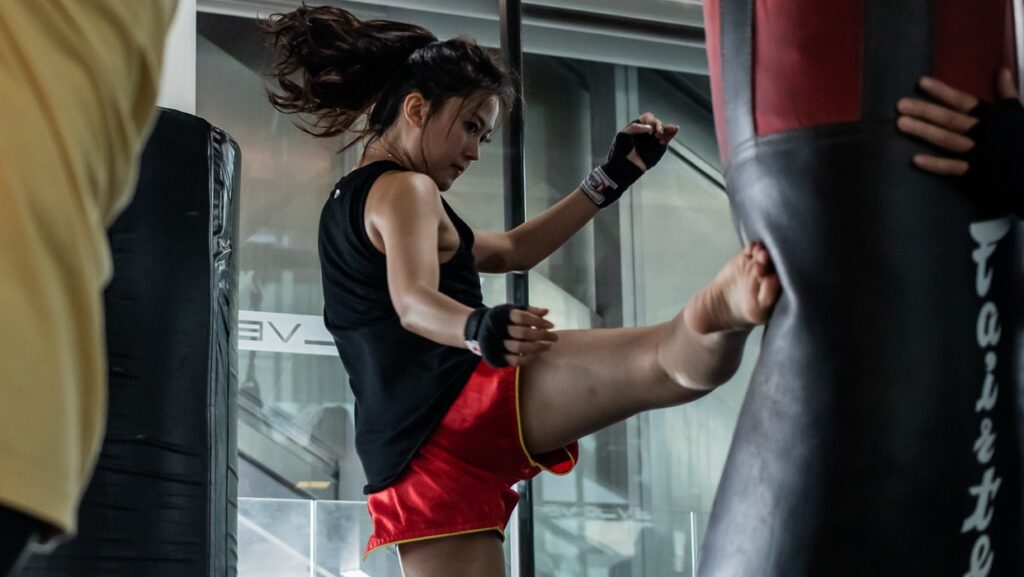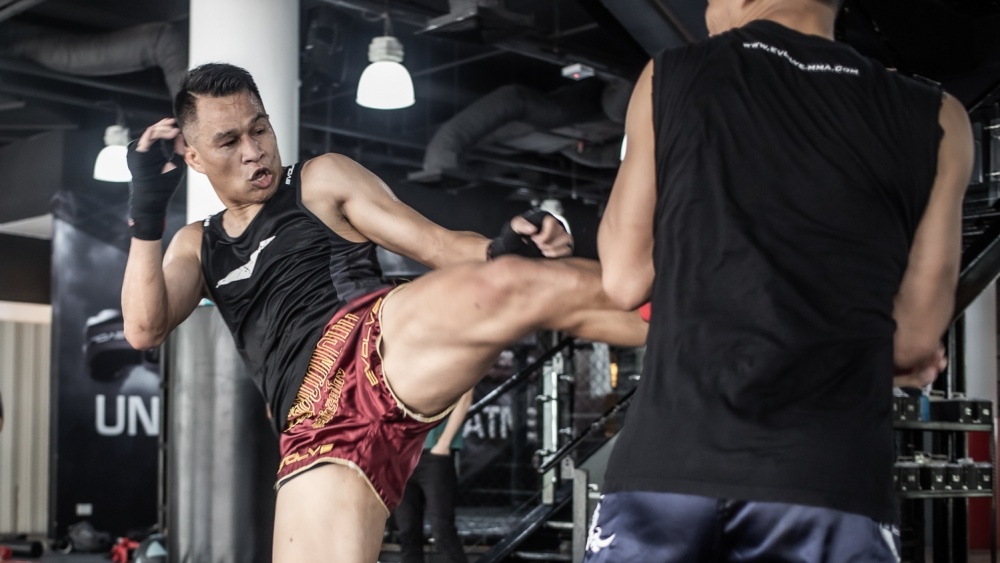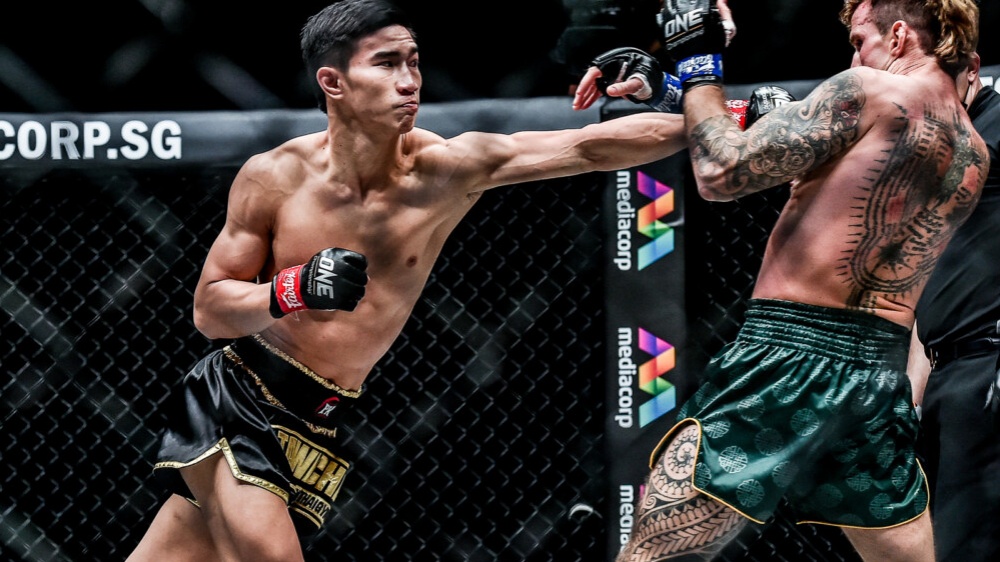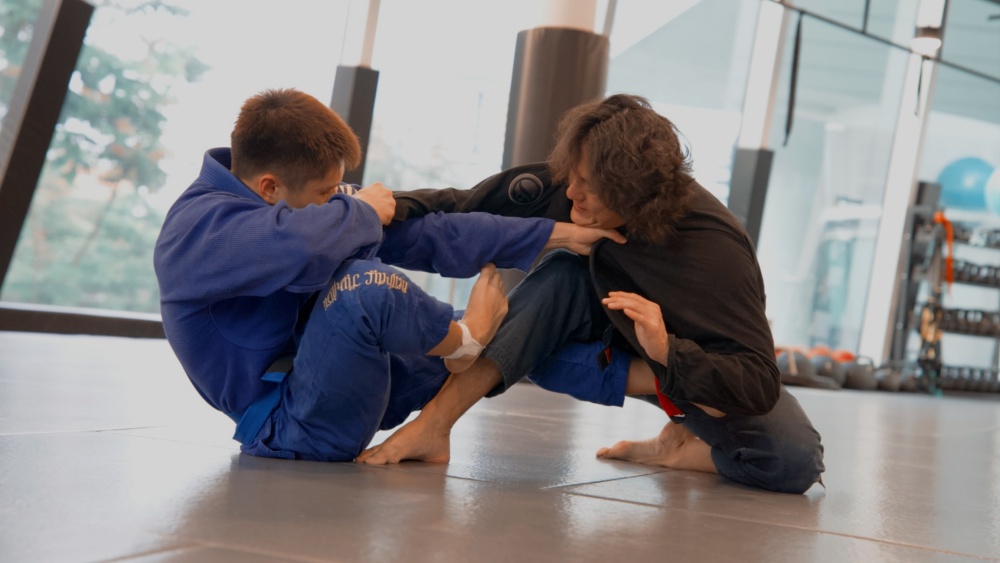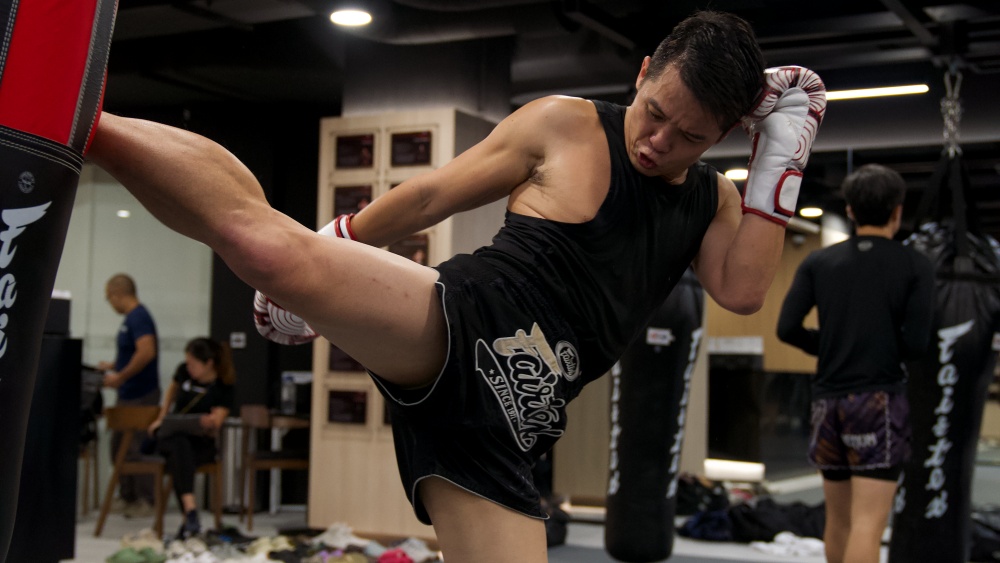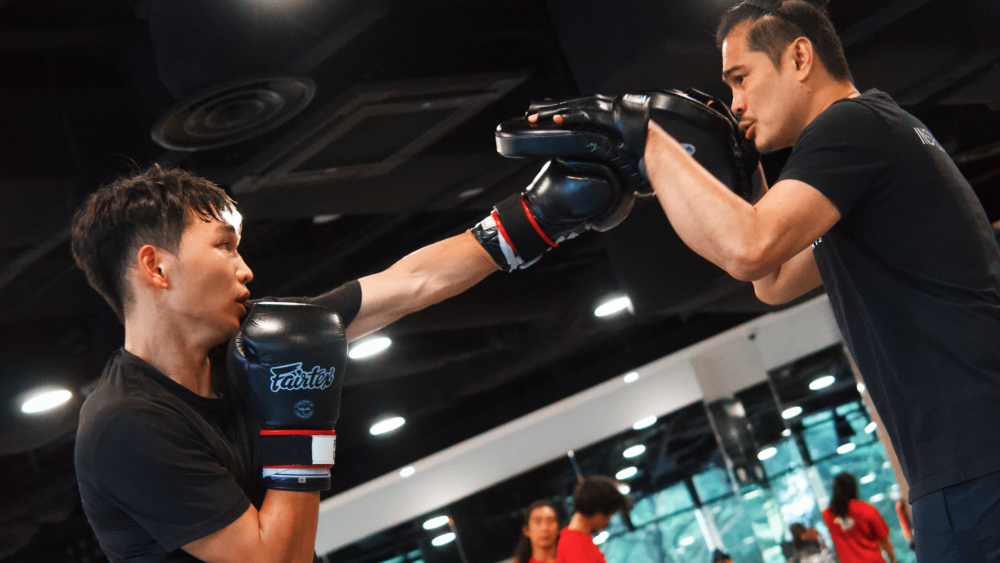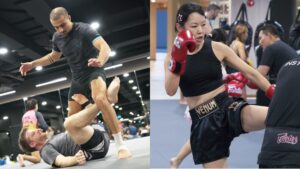The body clinch and throw is an effective technique, commonly used by many Muay Thai fighters when they are locked in a clinch battle with a taller opponent. If you are ever up against a taller opponent, or happen to be someone who often finds themselves on the losing end of a battle for neck control in the clinch, then this throw should become a staple weapon in your arsenal.
Throughout the next few paragraphs, this article will break down every aspect of this incredibly helpful technique. We’ll explain when to use it, the possible fouls you could commit if executed incorrectly, and even give you some tips to use to execute this against even the most proficient clinch fighter. Read on and soon you’ll find yourself breaking the clinch with a dominant scoring technique every time a taller fighter puts their arms around your neck.
What Is The Body Clinch And Throw?
The body clinch is exactly what its name implies. Simply put, it is wrapping your arms around the trunk of your opponent’s body in the clinch in what would commonly be referred to as a bear hug. When executed properly, you will have your body pressed directly against your opponent’s, leaving no space for knees, elbows, or bearing weight down upon your neck.
Throwing from a good body clinch position is a simple maneuver. With your hips pressed against your opponent’s you just need to ensure that your own feet are wider than your opponent’s then squeeze and turn them over your hips so that they’ll fall. Though you can execute a body clinch with a high position beneath the armpits, it is easier to throw from a lower position where your arms are around their lower ribs. Applying pressure and squeezing at the lower ribs will put pressure on their diaphragm, pushing air out of their lungs and raising their center of gravity, resulting in an easier throw.
Beware Of Fouls
The body clinch and throw is a simple technique but if you don’t practice it to perfection then you may accidentally commit a foul when trying to perform it in the ring. There are two major fouls that beginners tend to commit when trying to use this throw and we will explain them both below.
Hooking The Leg is the act of wrapping your leg around your opponent’s so that your calf muscle comes into contact with their own, tripping them as you throw. In Muay Thai, you can only sweep someone with the front of your leg. So, when you attempt this throw remember that your legs should be directly outside of your opponent’s, not behind them.
Back-Breaking is the process of squeezing your opponent, putting pressure on their spine to buckle them backward onto the canvas. This is extremely dangerous and may result in your opponent receiving lifelong spinal injuries, therefore it isn’t allowed in Muay Thai. When executing this technique remember that you are throwing your opponent over your hips, which involves turning them. You aren’t throwing them directly backward the canvas.
Some Common Problems You May Encounter And What You Can Do About Them
1) Your Opponent Has A Strong Top Lock
As we mentioned at the start of this article, the body clinch and throw is most commonly used when a fighter is losing the battle for neck control when in the clinch. Unfortunately, if your opponent has you tightly locked in a solid top lock position, with their elbows pressed right into your collarbones, then it can be near impossible to utilize this throw. The position of their arm will stop you from getting your body close enough to them and will even leave you open to powerful knees if you aren’t careful. Take a look at the above video on some preventive measures by Gabriel Varga. Remember to practice coming under their arms before they can reach for the clinch and dumping them before they can lock you into a bad position.
2) Their Stance Is Too Wide
While the throw relies on the fact that your stance is wider than your opponent’s for it to work, it can be hard if your opponent has trained themselves to defend against this throw. They will likely throw their legs wide and attempt to throw some knees so that you can’t turn them over your hip. Luckily, you only need one of their legs inside of yours for this throw to work. So, if they ever attempt this, keep your grip tight to prevent them from being too far from reach, then step back outside of their closest leg so that your hips are back in the right position to finish the throw.
3) Going Against Elbows In The Clinch
As we mentioned before, it’s going to be impossible to pull off this throw if your opponent is throwing elbows effectively within clinch range. Sometimes, when you try this technique, you’ll find that you can only get one side of your body close enough. The other will be held at range by the pressure of their elbow into your collarbone.If this happens, don’t panic; instead, focus on defensive measures to prevent further escalation.
By positioning your hands on their biceps, you effectively prevent them from getting closer and throwing elbows. This not only helps in maintaining your positioning but also sets up the body throw when the moment arrives.
It All Comes Down To Practice
The body clinch and throw is a simple and effective technique that you can use whenever you are stuck in the clinch. As you may have surmised from reading this article, it can be easy to defend if your opponent reads your intentions. A wide stance and a strong arm position can foil even the most talented fighter’s attempts at using this throw, so it is important to drill this throw again and again until you can pull it off before your opponents can see it coming.
You may also like:
Turning The Corner: Tips And Tricks To Get Out From The Corner Ring Ropes In Muay Thai

